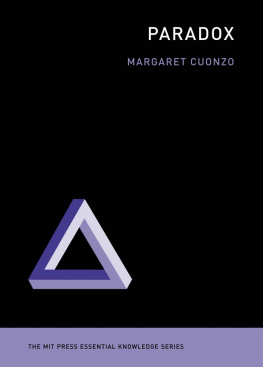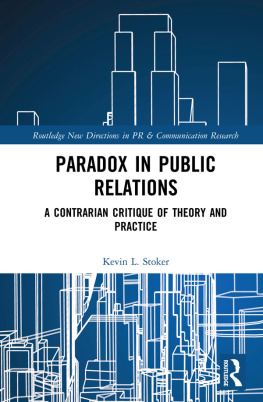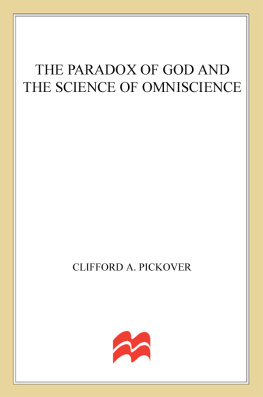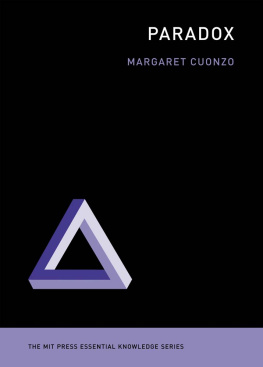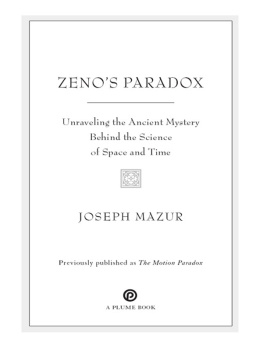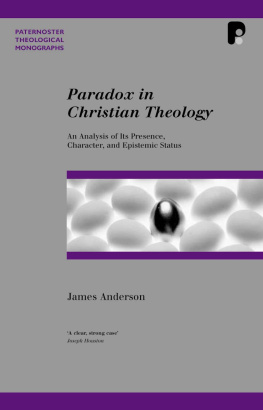The Yablo Paradox
The Yablo Paradox
An Essay on Circularity
Roy T Cook


Great Clarendon Street, Oxford, OX2 6DP,
United Kingdom
Oxford University Press is a department of the University of Oxford.
It furthers the Universitys objective of excellence in research, scholarship, and education by publishing worldwide. Oxford is a registered trade mark of Oxford University Press in the UK and in certain other countries
Roy T Cook 2014
The moral rights of the author have been asserted
First Edition published in 2014
Impression: 1
All rights reserved. No part of this publication may be reproduced, stored in a retrieval system, or transmitted, in any form or by any means, without the prior permission in writing of Oxford University Press, or as expressly permitted by law, by licence or under terms agreed with the appropriate reprographics rights organization. Enquiries concerning reproduction outside the scope of the above should be sent to the Rights Department, Oxford University Press, at the address above
You must not circulate this work in any other form and you must impose this same condition on any acquirer
Published in the United States of America by Oxford University Press
198 Madison Avenue, New York, NY 10016, United States of America
British Library Cataloguing in Publication Data
Data available
Library of Congress Control Number: 2013955890
ISBN 9780199669608
Printed and bound by
CPI Group (UK) Ltd, Croydon, CRO 4YY
Links to third party websites are provided by Oxford in good faith and for information only. Oxford disclaims any responsibility for the materials contained in any third party website referenced in this work.
For Charlotte Genve and Piers Dallas
Acknowledgments
As is traditional, some thanks are in order. First among these are to my mother and to my wife who, at different times and in different ways, have been critical supports, without which the work presented in this book could not have been done. Only slightly behind them are my teachers, Stewart Shapiro, Neil Tennant, and George Schumm, who provided me with the best philosophical education money could have bought (even if, thanks to fellowships and teaching assistantships, it didnt have to!). Along the same lines, Crispin Wright deserves special thanks for being a particularly supportive colleague and de facto teacher during the four years that I spent as a postdoctoral research fellow at the Arch Research Centre in St Andrews, Scotland. Both the shape of this book and my own characteristics as a philosopher owe much to these very special people. Of course, it goes without saying that any mistakes I have made (either in the material below or in the way I have lived my life) were likely counseled against by one or all of the people listed above, and thus the fault is entirely my own.
A great deal of appreciation is owed to Scot West, who allowed me, my wife, and her family to borrow his chalet in Champry in the Swiss Alps for a week. Without the relaxed and writing-conducive atmosphere I found there, this manuscript would likely never have been completed.
A huge debt of gratitude is also owed to Stephen Yablo, for sharing the personal reminiscences that are recounted in the first chapter, as well as for his encouragement over the years I have been working on this project.
A further great debt is owed to Eduardo Barrio, who invited me to visit Sociedad Argentina de Anlisis Filosfico (Sadaf) in the summer of 2011 and again in the summer of 2012. During the first visit, I was allowed to lead a multi-session workshop on an early draft of this work. During the second visit, Professor Barrio organized a workshop where his students responded to the work, which resulted in a special symposium published in the journal Anlysis Filosfico. I am especially grateful to the students who participated in this latter eventincluding Ignacio Ojea, Federico Pailos, Lavinia Picollo, Lucas Rosenblatt, Damin Szmuc, Diego Tajer, Paula Teijeiro, and Alonso Zela.
Additionally, the students who attended my Spring 2008 graduate seminar on Truth, Revenge, and Paradox (Will Bausmann, Shay Logan, Leia Rollag, Reggie Schutte, Nick Tourville, Joseph Weinberg, and Brian Wilson) deserve special mention for spending four weeks working through an early draft of this manuscript.
Catherine St. Croix also deserves special thanks for working through the penultimate draft as part of an independent study on semantic paradoxes.
Finally, I also need to thank Haidar Al-Dhalimy, J. C. Beall, Nicholas Dalgliesh, Sjur Dyrkolbotn, Philip Ebert, Hartry Field, Scott Hargarten, Geoffrey Hellman, Jeffrey Ketland, Michael Lynch, Lars Bo Gunderson, John Mayberry, Nikolai Pedersen, Agustin Rayo, Stephen Read, Marcus Rossberg, Greg Taylor, Michal Walicki, and Michael Warren for helpful feedback on and discussions about earlier papers or connected material that was eventually incorporated into the present work.
Portions of this work were completed while holding an AHRB research fellowship at Arch: The Centre for the Philosophy of Logic, Language, Mathematics, and Mind (now Arch: Philosophical Research Centre for Logic, Language, Metaphysics, and Epistemology) at the University of St Andrews.
Contents
You hold in your hands a book about the Yablo paradox. Or so the title suggests. In actuality, this book is about much more than just Yablos infinitary construction. Instead, the volume is meant to contribute to our understanding of the semantic paradoxes more generally, and the role that circularity plays in our understanding, diagnosis, and attempted solutions to these conundra. The most famous such paradox is, of course, not the Yablo paradox, but the Liar.
I have been interested in the Liar paradox (or Epimenides paradox, or Eubulides paradox, etc.) since very early in my undergraduate career, when some professor (likely Peter Pruim, who was teaching logic at Virginia Tech at the time) noted my interest in logic and mathematics and showed me that very famous and extremely puzzling self-referential sentence,
This sentence is false.
The obsession grew, to the point where, in graduate school, one of my teachers warned me that I should be doing real philosophythat I was in danger of becoming merely a paradox monger (to that professor, who knows who he is, I would like to point out that paradox mongering has served me rather well, by the way!). But along with the growing fascination came a growing unease: as I became aware of more and more variants of the Liar (many tracing back to medieval logicians, especially John Buridan), I became more and more worried regarding the centrality that the Liar itself played in semantic theorizing. The implicit idea underlying much work on the paradoxes seems to be that, if we could solve the Liar (in whatever sense of solve turns out to be appropriate, a ), then the other puzzles and paradoxes involving self-reference and semantic notions would somehow take care of themselves. Of course, my worry was not, and is not, that the Liar should not play a central role in such theorizing, but is merely the thought that it should not hog the spotlight. Theorizing about truth, satisfaction, and the paradoxes that arise with regard to these concepts, it seems to me, should resemble more of an ensemble work than a one-man show, with many different examples of semantic paradox teaching us a number of different lessons about truth and the rest.
Among these former bit players, of particular interest in this respect is, of course, the Yablo paradoxan infinite sequence of sentences, each of which asserts the falsity of all of the sentences below it in the list. Hence (a bit informallywe shall see more careful formulations later):
Next page



